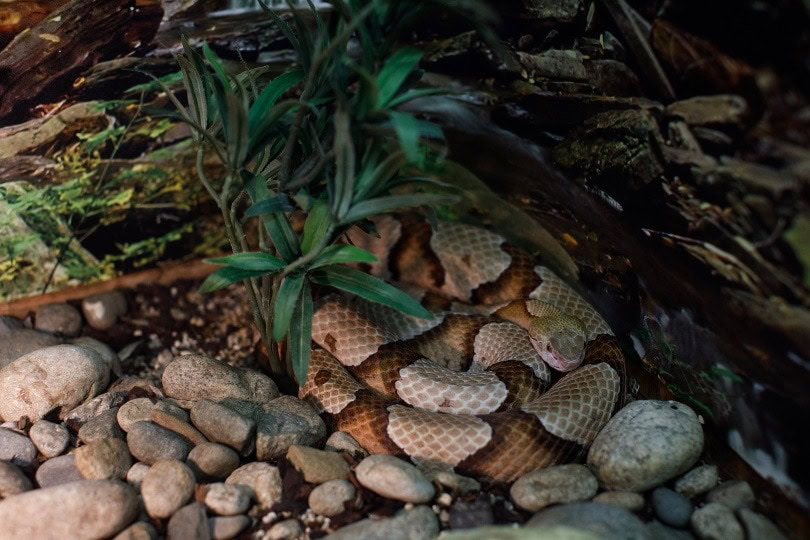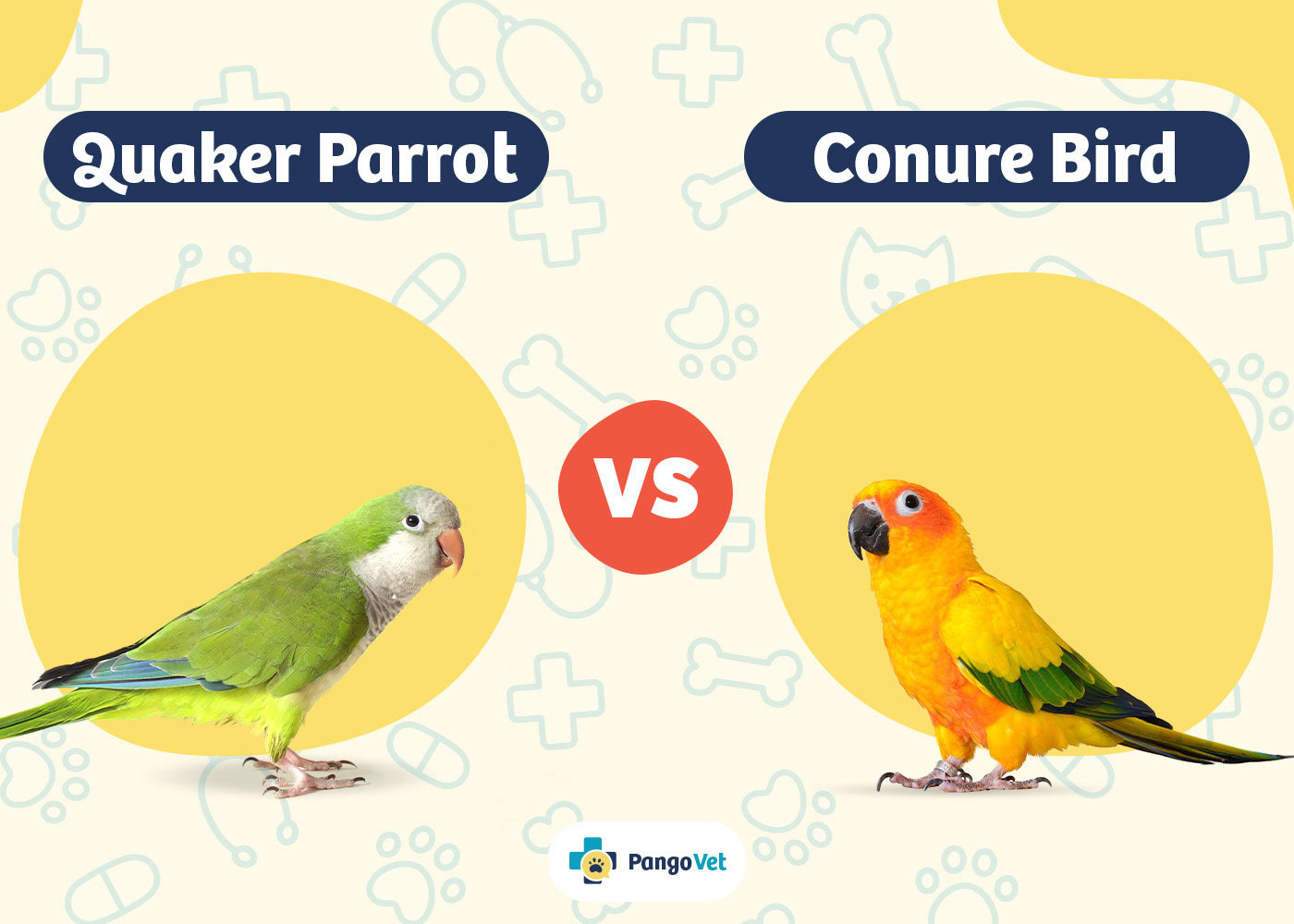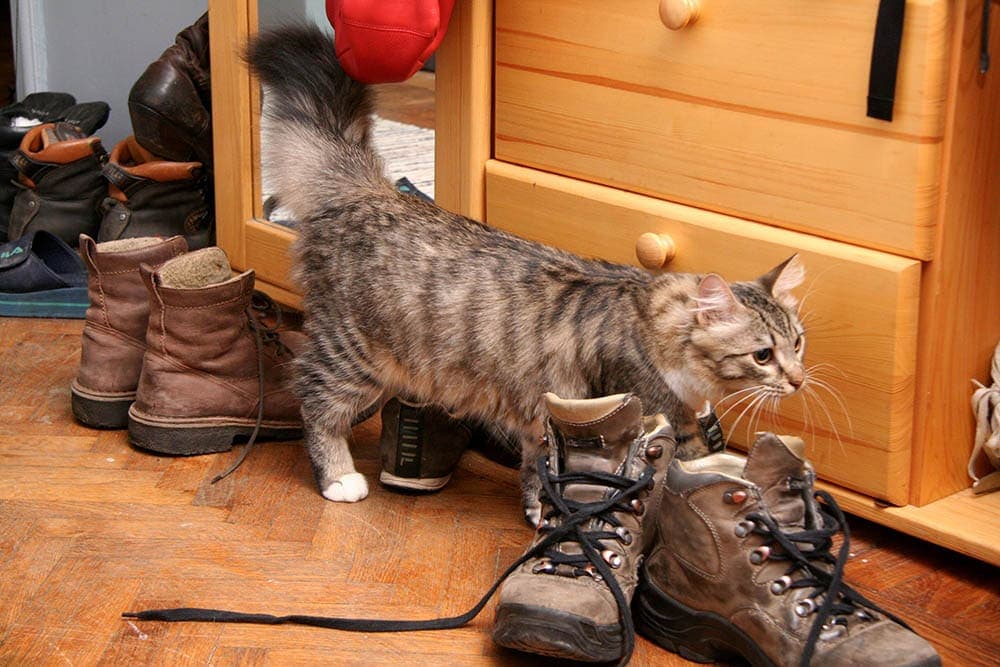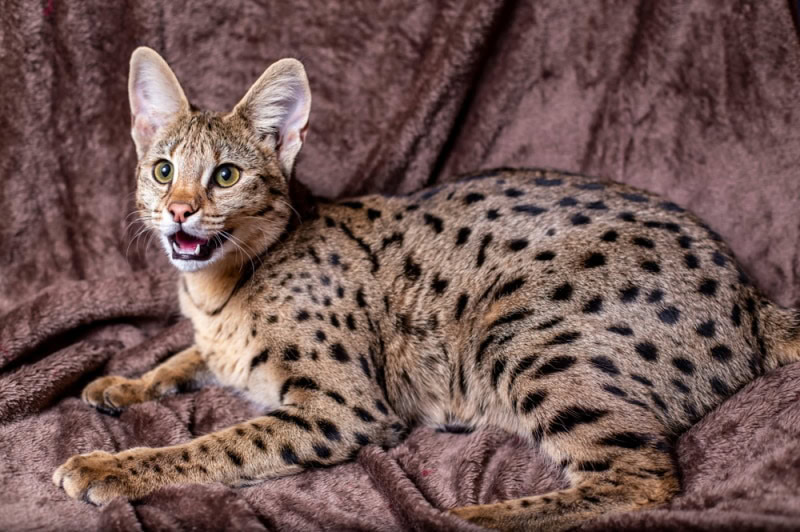Click to Skip Ahead
Perhaps you’re in the market for your first snake, and you’re unsure how to decorate its habitat, or you’re an experienced snake enthusiast looking to liven up your pet’s vivarium.
Finding the right plants for your pet snake’s home is very important. You don’t want to choose anything that could harm your snake, and taking care of the plants shouldn’t be too difficult, either.
We’ve created a list of 12 plants that would work well in your snake’s enclosure. The list is divided into two sections: plants that do well in humid conditions and those that can survive a dry, desert-like environment.

The 6 Great Plants for a Humid Vivarium
If you have a vivarium set up to mimic a tropical rainforest, the environment should be warm and humid. This type of environment is essential if you have a tropical snake, but it will also impact the kind of plants you will use in the enclosure.
1. Bromeliads
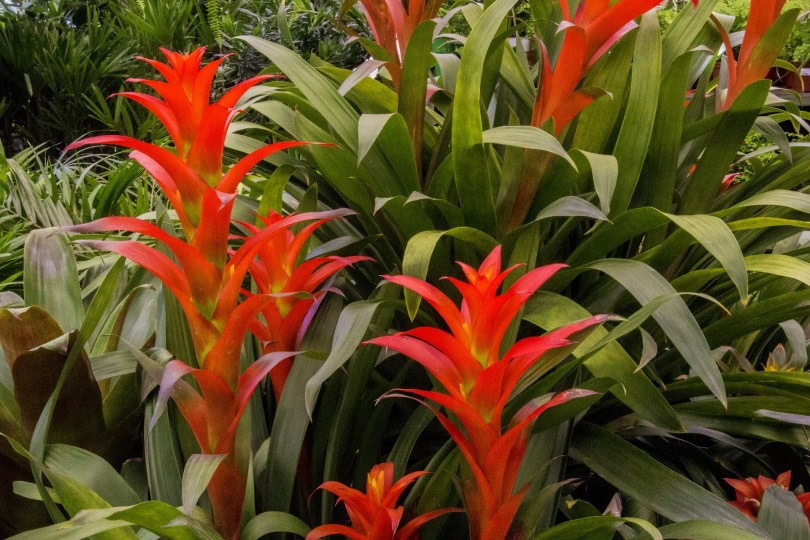
These plants have almost 3,500 species within the genus, and they have special cup-like leaves (typically called urns) that collect rainwater.
You can investigate which species might work best in your snake’s habitat, but some of the more popular species include:
- Tillandsia pseudobaileyi: This “air plant” needs to be anchored to rocks or trees and does not require soil. It just needs occasional misting, but it is very hardy and will thrive with little intervention.
- Neoregelia: This beautiful and bright plant needs its urns kept about one-quarter full of water and requires a lot of light. Otherwise, it does well when left alone.
2. Ferns
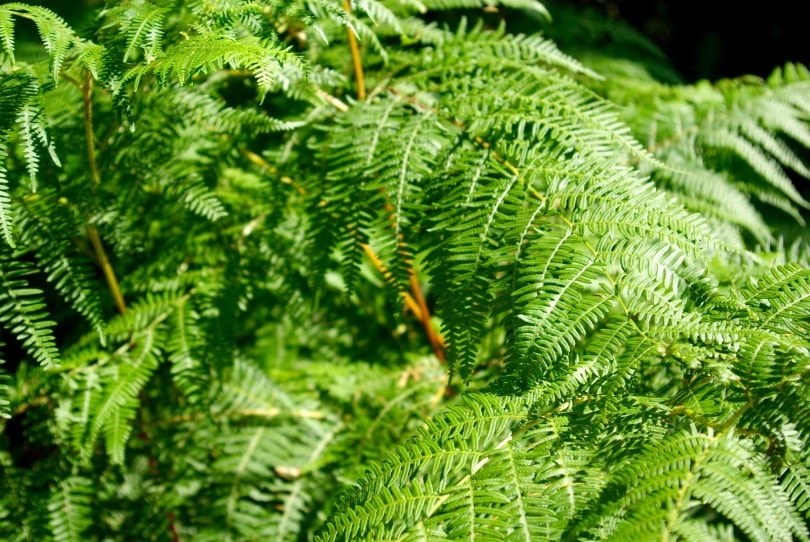
There are a number of ferns that you can consider that are not only safe and easy to take care of but will look gorgeous in your vivarium. There are over 10,000 species of ferns, and they are amongst the oldest plants in the world.
Some ferns that are suitable for your snake’s habitat are:
- Bird’s nest fern: This fern requires a well-lit vivarium, room to grow, and regular misting.
- Boston fern: This fern is quite hardy as long as it’s not overwatered. It does very well as a hanging plant.
- Staghorn fern: Named for its unusual appearance, the Staghorn needs dim light and can grow on other plants like the bromeliads.
3. Golden Pothos
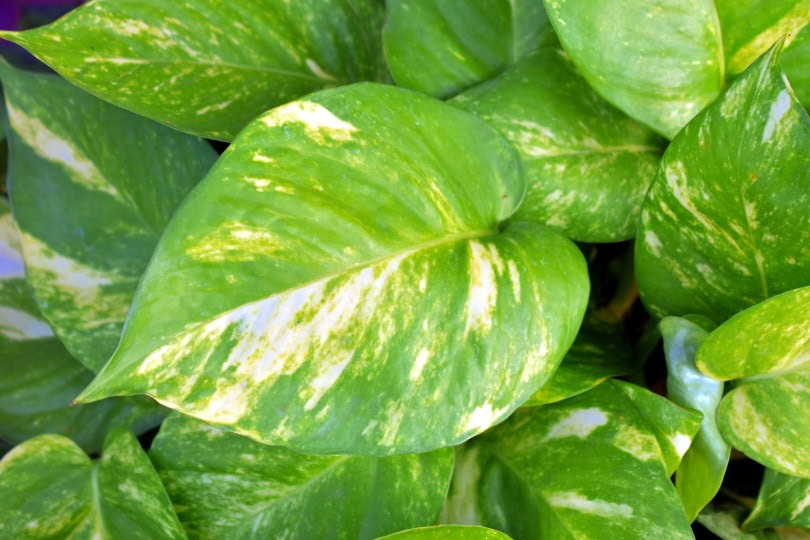
Easy to look after and great for beginners, the golden pothos can survive in low light and grows horizontally rather than vertically. It does well in damp conditions and is a very hardy plant. It might require the occasional pruning as it might try to take over the floor of your habitat.
4. Inch Plant
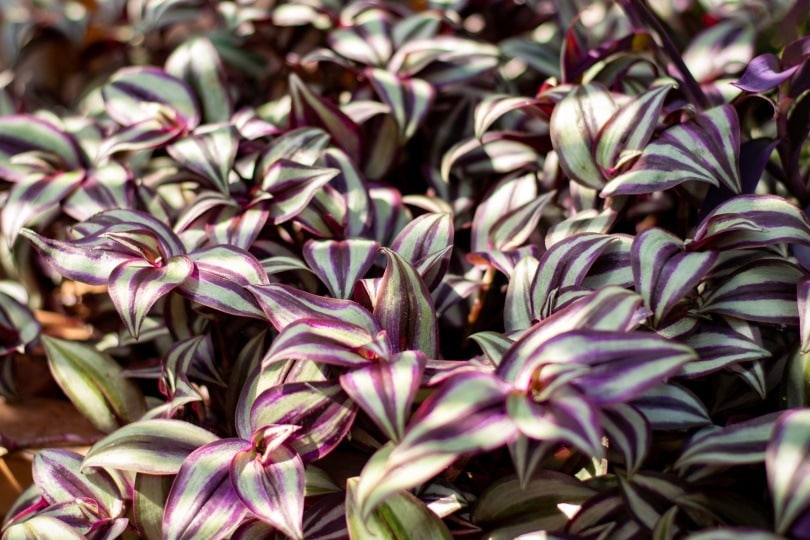
This plant has been named the inch plant because of its propensity to grow quite quickly. It has pretty green and purple leaves and needs bright but indirect light. It’s a type of vine, so you need to prune it back occasionally, or it will try to take over the enclosure.
5. Orchids
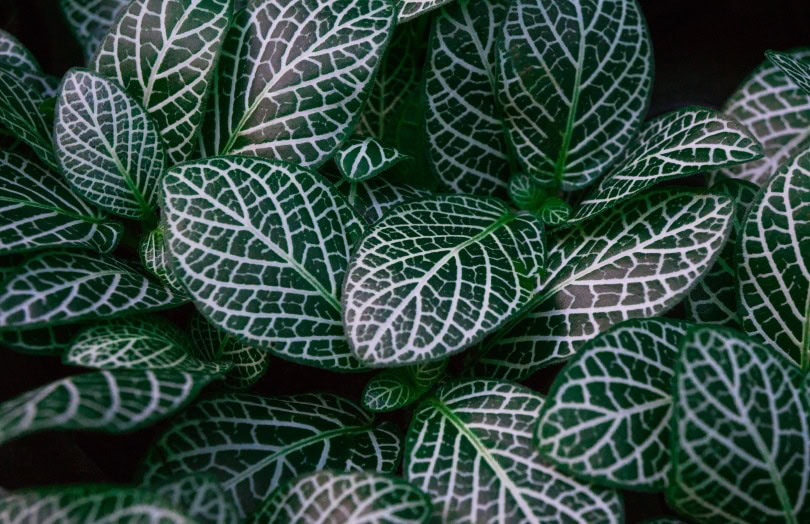
Orchids are notorious for being delicate flowers that are difficult to cultivate. However, several orchids are green plants and are relatively easy to grow. Plus, they will do quite well in your vivarium.
- Jewel Orchid: With its striking dark green leaves that sport pink pinstripes, this orchid has a tall white flower that blooms once a year. It does well with moist soil, can handle lower light conditions, and thrives in humidity. It is one of the easiest orchids to grow.
- Pink Rock Orchid: This orchid blooms a pretty pink flower and can grow out of rocks. It needs bright, indirect light and does well in hot and humid conditions.
- Zootrophion dayanum: Named for their unusual flowers (from the side, they resemble mammal heads), these orchids do well in cool to warm temperatures, with low to medium light and moist soil.
6. Spider Plant
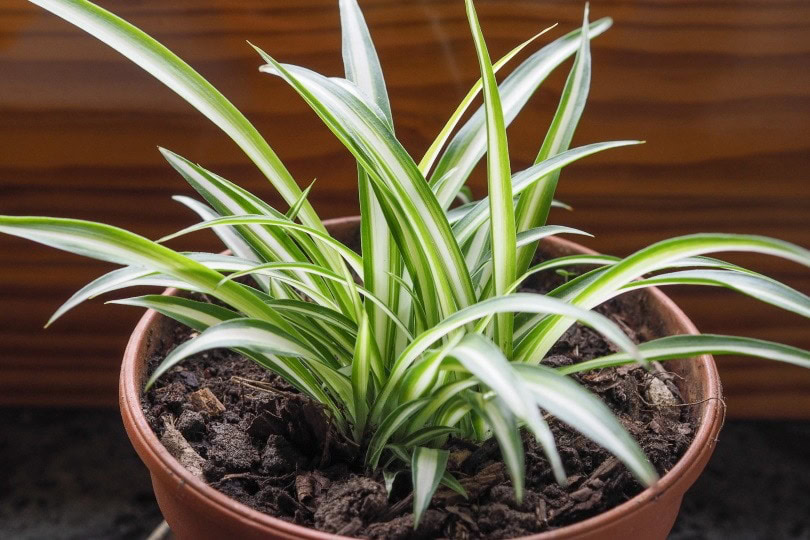
These are very popular house plants, particularly for beginners, as they are easy to take care of. They will probably do best if they are hung up in the vivarium. Just be sure they are kept moist but can drain as well. They can grow to be fairly large, so be prepared to remove them at some point in the future unless you have a very large vivarium!

The 6 Great Plants for an Arid Vivarium
Next are the plants that will do well in a vivarium that mimics a desert-like environment. In this case, you will need plants that require a dry habitat that doesn’t require a lot of water. Many of these plants are succulents, which also makes them much lower maintenance.
1. Aloe Vera
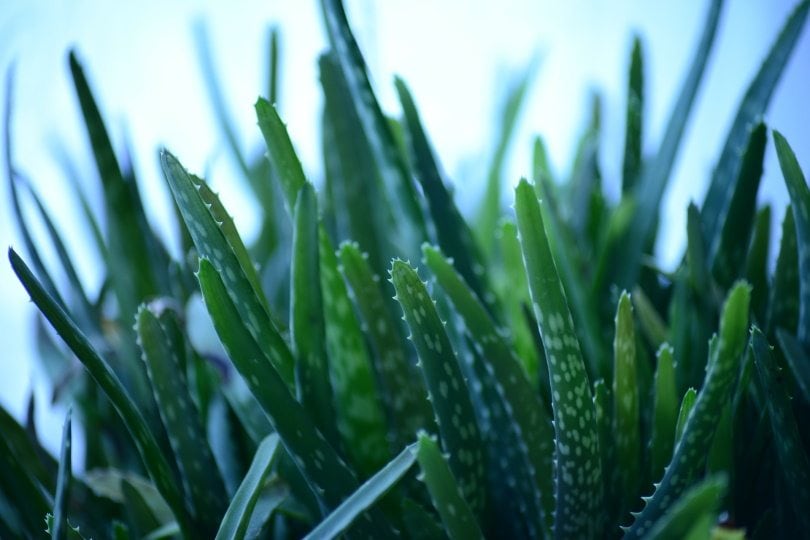
Aloe vera is a succulent renowned for its soothing and healing properties. It can also make an excellent plant for your snake’s vivarium. Some varieties have small spikes, so be sure to select the right kind for your enclosure.
They grow to at least 1 foot, so be sure you have the right height to accommodate them. They can be planted in the substrate and only require watering if the soil is dry. Avoid placing them in direct light.
2. Echeveria
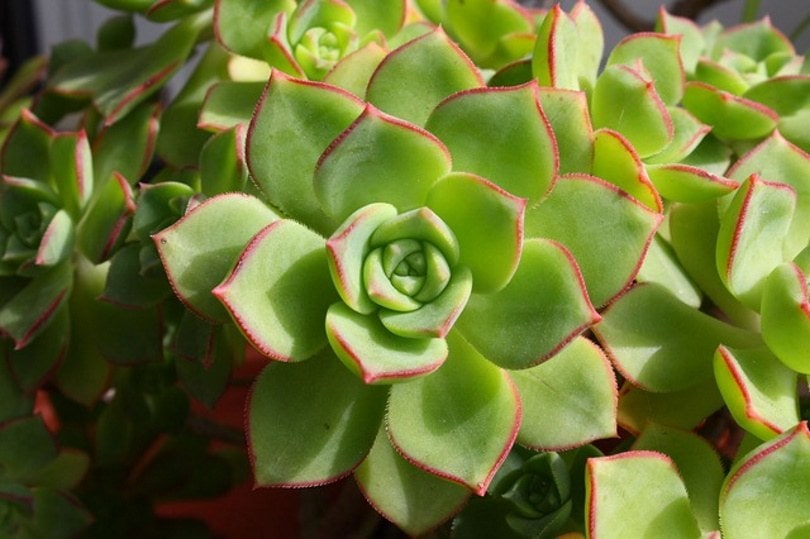
Echeveria is a succulent that comes in various colors, from purple to green to blue. Some echeveria can grow up to a foot tall and a foot wide, so double-check the type of echeveria you’re considering before purchasing. These pretty succulents are easy to maintain and are safe for your snake.
3. Haworthia
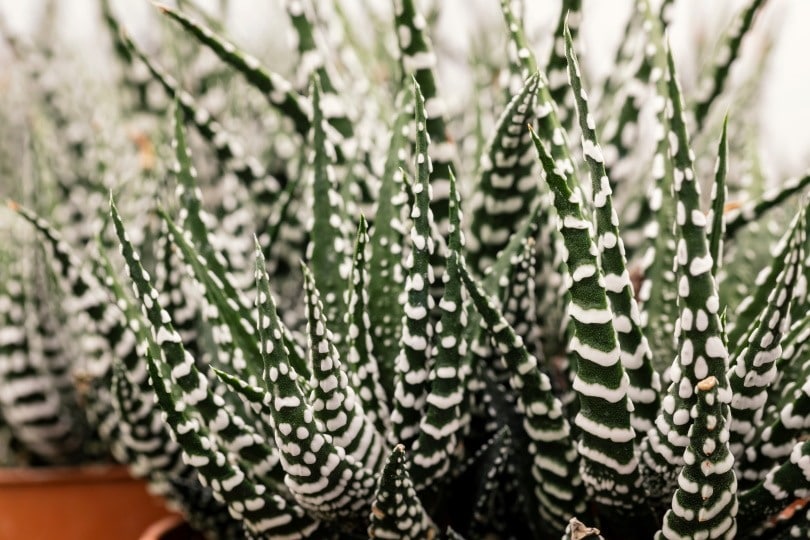
Several species belong to the Haworthia genus. These small succulents, originally from South Africa, share the same family as aloe vera. They should be watered every 2 to 3 weeks and do well in direct and indirect light.
4. Mother-in-Law’s Tongue
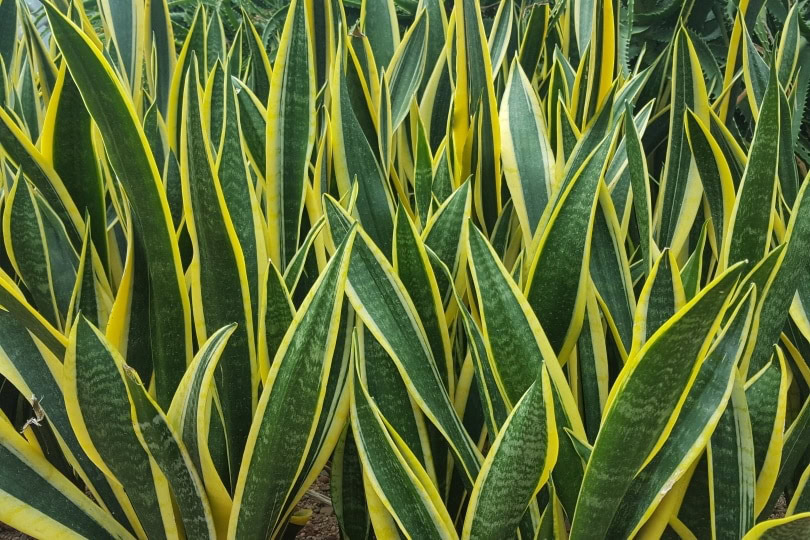
This plant is also called the snake plant, so perhaps it’s meant to be. It grows tall, so again, you must be sure you have a tall vivarium. It requires bright lights but is tolerant of drought conditions and should only be watered every 3 weeks or so.
5. Ponytail Palm
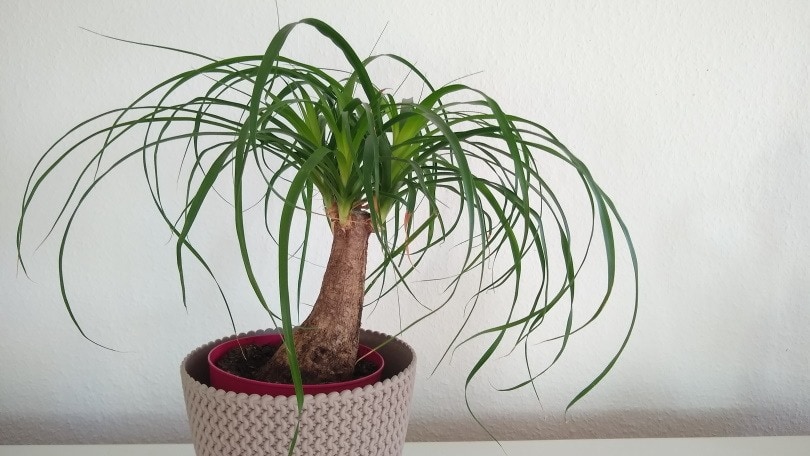
These can grow into full-blown trees, but they grow slowly, and perhaps leaving them potted will make them easier to remove once they outgrow your vivarium. They do fine in low light, and they store water in their stems, so they don’t need much water.
6. String of Pearls
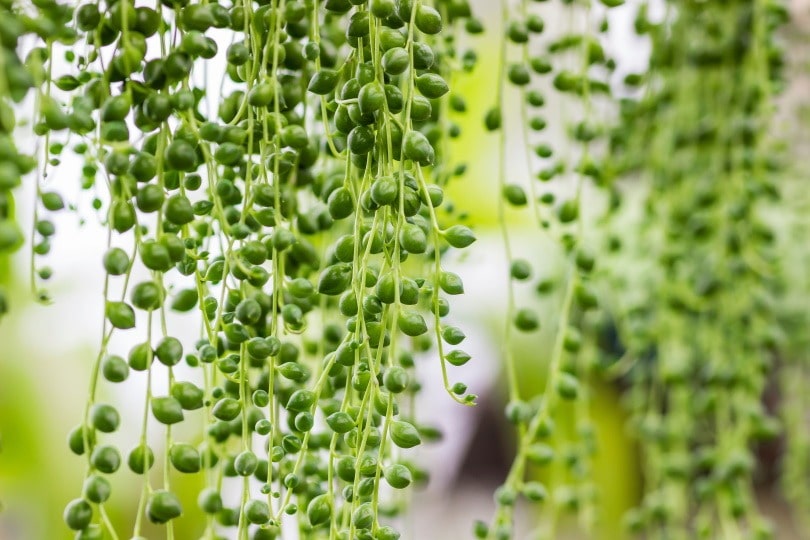
This succulent is unique, thanks to its rather eye-catching appearance. It acts like a vine by growing and taking root in different places, and if you cut some shoots and plant them, you can grow a new plant. It needs bright light and prefers dry, arid conditions. This succulent can also do well in higher levels of humidity but prefers dry conditions.

Things to Consider
Luckily, snakes don’t eat plants, so you don’t have to worry about risking your pet’s health with a plant. But it’s better to be safe than sorry.
Purchase the Appropriate Plants
You’ll want to ensure you buy the type of plants that will thrive alongside your snake. For example, look for succulents for your gopher snake and ferns and orchids for your red-tailed boa. You’ll want to research the best plants for the habitat as well as consider how much or how little effort you want to put into taking care of them.
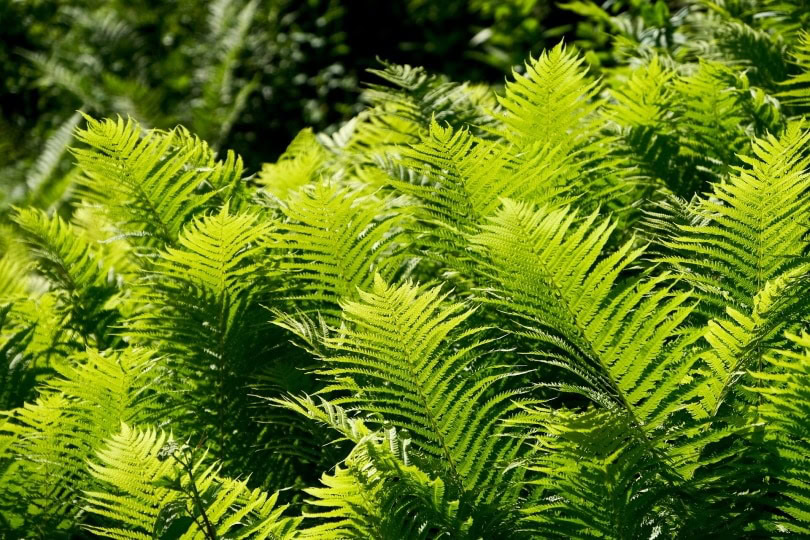
Think About Placement
You’ll want to consider the sturdiness of your plants and the best place to install them. If you’re worried about your snake accidentally knocking things over, be sure they are out of your snake’s path. Also, ensure you have easy access to the plants for watering and pruning (if necessary).
Think About Installation
Some plants might be better off left in their containers and pots. If they grow too big, you can easily remove them. Some plants can be planted directly in the substrate or in rocks and bark.
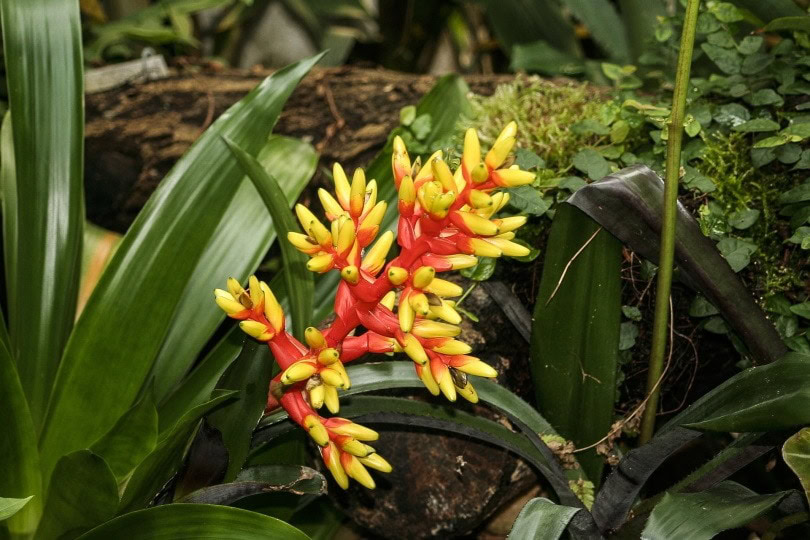
Prepare the Plants First
Before you place your new plants in the vivarium, wash them with water to clean off any chemicals, pesticides, or pests that might have hitched a ride. You might also want to consider removing the potting soil and replacing it with your own so that you know it is safe for your snake.
Pruning and Maintenance
You’ll find that some plants need occasional pruning, or they’ll start to take over the habitat. This can be accomplished easily and quickly. If in doubt, look for pruning advice for each plant online.


Final Thoughts
We all know plants will be extra work, so why on earth would you even consider adding plants to your snake’s habitat? Most snakes will do just fine without any added plants, but there are some advantages.
Plants add oxygen into the enclosure, help turn the waste into fertilizer, and add nutrients into the substrate. They also give your snake additional places to rest and hide, and let’s face it, a vivarium full of beautiful plants will showcase that gorgeous snake of yours.
Yes, plants are extra work, but if you do your research and select the right plants, you might find that they don’t require much work at all, but you and your snake will reap the benefits.
Featured Image Credit: Maria Babikova, Shutterstock
